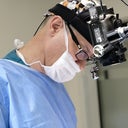The method for racing the tip with rhinoplasty surgery is not by pulling on your skin.



